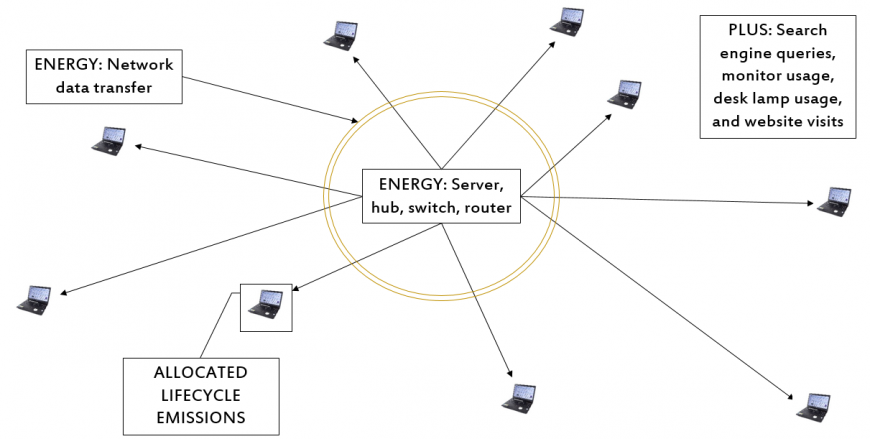
 back to all news
back to all news
A Framework for Estimating the Emissions from Virtual Conferences

The pandemic has shifted office work into the home sphere, and conferences are not exempt. While virtual conferences have a marked reduction in their greenhouse gas emissions relative to their in-person counterparts, virtual conferences still create emissions through computer use, data transfer energy use, and other factors, according to a study of the estimated emissions produced by virtual conferences.
"It is all too easy to ignore the materiality and energy consumption of the Internet, as so much of our time spent using digital devices feels like it takes place in an abstract, incorporeal space," said Grant Faber, who authored the study that was recently published in the International Journal of Environmental Studies. Faber is a SEAS master’s student and research assistant in U-M's Global CO2 Initiative.
Through his analysis, Faber found that for the virtual conference that motivated the study, an in-person conference would have produced more emissions by a factor of 66 times. Although the estimate of emissions produced by virtual conferences is constrained by data collection technology used by participants, Faber noted, this study can help organizations think about how to mitigate their environmental impacts even when meeting or holding a conference in an immaterial, virtual setting.
"Given an increasing global population paired with an increase in the use of digital services, estimating associated energy use and emissions is becoming increasingly important for the creation of mitigation strategies," Faber said. "Individuals, corporations, and governments around the world can already undertake a variety of such strategies—from repairing instead of replacing computers to decarbonizing the energy supply—to help reduce emissions from digital activities."

